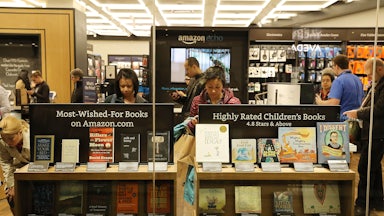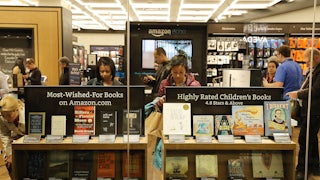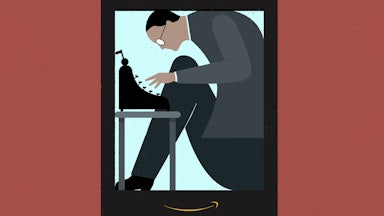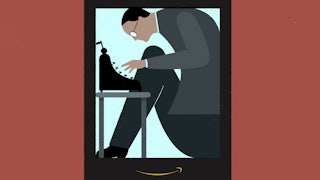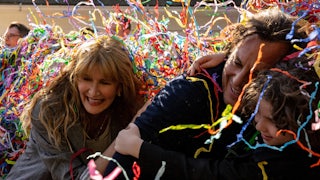America’s worst bookstore chain is no more. On Wednesday, Amazon announced it would be closing all 68 of its brick-and-mortar bookstores, as well as its “4-Star” stores, which sold a hodgepodge of products that had received decent reviews on its main website. The bookstores had expanded rapidly after Amazon opened a first location in Seattle in the fall of 2015, but growth slowed during the Covid-19 pandemic. Now the chain has said that it’s refocusing its physical retail efforts into a planned expansion into clothing and department stores. “We remain committed to building great, long-term physical retail experiences and technologies, and we’re working closely with our affected employees to help them find new roles within Amazon,” company spokesperson Betsy Harden said in a statement.
Amazon Books was always awkwardly situated between the company’s pitiless approach to commerce—its all-consuming need to be a “disruptor” in everything that it does—and the necessities of old-fashioned retailing, particularly bookstores. It was also simultaneously a P.R. stunt—an attempt to put a human face on the grim smiley face that adorns the company’s boxes—and a weird experiment, an attempt to use physical retail stores to mine data about how customers shop in person. No one ever asked for it, the strategy never worked particularly well, and now the company is doing what it does with its many failed experiments: quickly washing its hands and moving on to the next attempt to gain market share.
When Amazon opened its first bookstore in New York City five years ago, Amazon Books chief Jennifer Cast insisted that the company’s fledgling book-and-mortar retail empire was a labor of love. “Books are our heart,” she said. “Jeff”—that would be Bezos, the company’s increasingly Lex Luthor-y founder—“loves books. Most of our company loves books, and so the mission of Amazon.com, the purpose was to help customers find, discover, and buy books online. And what we realized was that we had 20 years of data—about why customers buy, how they buy, what they read, how they read, and why they’re reading it—that could make a physical bookstore just a different and better place to discover books. So that’s what we wanted to do.”
It was a defensive answer but not a particularly surprising one. Most bookstore owners—even ones of small chains, and Amazon Books was, in 2017, just that, with only five locations—would hardly be expected to have to publicly proclaim that, yes, they had a real affection for literature. Bookselling is famously a low-margin business, one into which most proprietors enter out of passion. But Amazon Books was run by a company that had striven literally to transform the publishing industry to its will. Its ruthlessness was legendary. It squeezed publishers for vast discounts, sold books at a loss to drive out competitors, and treated the publishing industry writ large as a relic worth devouring. Bezos himself once instructed his staff to pursue publishers the way a hungry cheetah pursues a gazelle: “The cheetah looks for the weak, looks for the sick, looks for the small.” Yes, Jeff loves books, for what sounds suspiciously like dinner.
In this way, Amazon’s stores were torn between competing imperatives. On the one hand, Amazon was bent on proving that it could do to physical retail what it did to e-commerce. So a normal bookstore simply wouldn’t do. Instead, Amazon would Amazonify bookselling, creating a hybrid online and offline shopping experience. The results were bewildering. It was never clear, for instance, how much anything cost because prices were the same in the company’s stores as they were online and were thus constantly fluctuating. Customers were therefore encouraged to download an app on their phone that would allow them to check the price of items that were quite literally in front of them. This likely had some sort of vaguely nefarious purpose—i.e., to encourage people to use the Amazon app more, which would make them buy more Tuscan milk from Amazon’s core e-commerce business—but it mostly just disrupted the normal experience of being in a normal store. It was always quite clear that if you walked into an Amazon bookstore, you had stepped into a strange retail laboratory, where huge troves of data were being collected to “improve” the shopping experience. The result was, as I wrote upon visiting the first New York store in 2017, a bizarre and antiseptic experience.
But Amazon Books was also really trying to be a real old-fashioned Shop Around the Corner-y bookstore, albeit with Amazonish twists. One of the few core lessons in bookselling is that face-outs—showing the whole front cover rather than just the spine—sell more. Amazon typically took this way too far and only sold books via a face-out, which meant that it also carried very limited stock, typically only a few thousand copies. In small stores that are curated—New York’s Three Lives comes to mind—this can create its own type of logic that informs the experience, making more out of less. Amazon Books had no such logic, in part because the store insisted on (mostly) selling books with high Amazon ratings.
The result was a selection that was both extremely limited and often made little sense: If you were interested in anything less than mega-bestselling titles, you were given precious few options. This was a bizarre turn for a company that prided itself on being the “Everything Store,” and it never quite worked. For all its commercial innovations, Amazon has never quite figured out how to simply recommend books to customers, something that normal bookstores do quite well. Instead, it has achieved its remarkable growth via old-fashioned methods, mainly selling things at much lower prices than its competitors.
It’s tempting to draw sentimental conclusions. Independent bookstores are often community hubs and event spaces and places where you can get to know the staff if you drop in regularly. Amazon Books was never like that and instead tended to crop up in luxury malls; the customer base of its New York locations seemed to be entirely made up of tourists. There was, moreover, no attempt to be that type of hub, though it’s hard to imagine what that would look like—few publishers or authors would hold events at Amazon locations. Nevertheless, while Amazon Books was notable for its reasonably high pay and benefits, the stores themselves never felt part of the communities in which they were located. Instead, they were at best akin to a Sharper Image where you could buy books by Ron Chernow and Brad Thor. (It’s worth noting as well that, despite some glib coverage of this story, reports of the death of independent bookstores have been greatly exaggerated, though it’s unlikely that they’ll ever reach their pre-mall, pre-Amazon, pre-2008-economic-collapse heights.)
What does this mean for Amazon’s retail ambitions? The company has historically used books as trial balloons for more ambitious efforts, and Amazon Books may be no different. The stores were always experiments aimed at collecting data and gaining experience with brick-and-mortar retail. That experience will now go into larger stores that make more sense for the company’s ambition: Its commitment to Whole Foods remains solid, and an entry into clothing makes sense—people like to try clothes on before, not after, they’ve bought them. Amazon will continue to explore physical retail, just as it will continue to dominate e-commerce, and it will use that dominance to punish its competitors, big and small.
It’s easier to divine Amazon’s commitment to books, however. Despite Cast’s comments—and the constant, annoying reminders that, for instance, Jeff Bezos’s favorite book is The Remains of the Day—Amazon has never had any particular affection or interest in books or bookselling. Books have only ever been Amazon’s foothold for a larger ambition: dominating every face of American retail. In the case of Amazon Books, this led to a failure on many fronts. It was a store that didn’t succeed in large part because of how closely it was tied to the company’s imperial ambitions. Its failure won’t matter much in the long run, but it is certainly briefly satisfying—particularly for independent bookstores within driving distance of these failed experiments.

